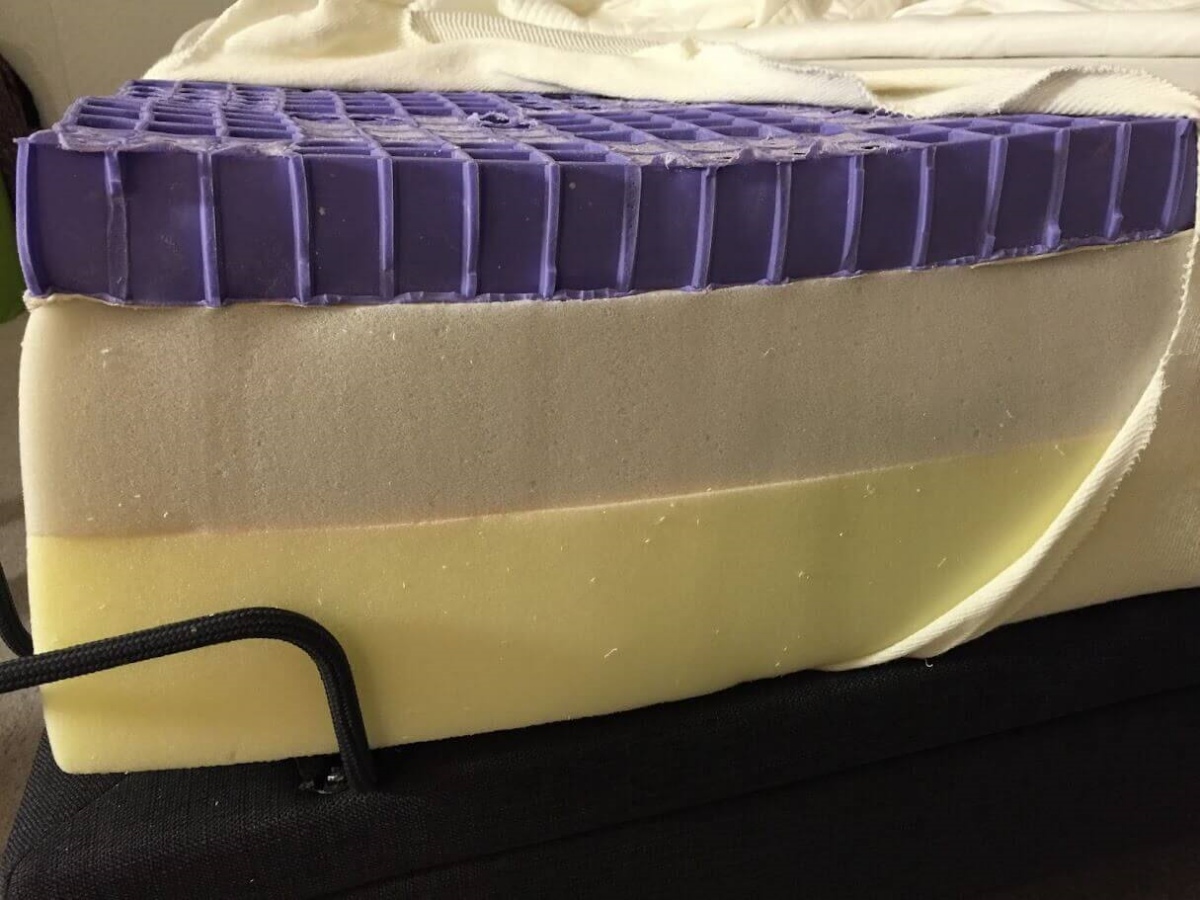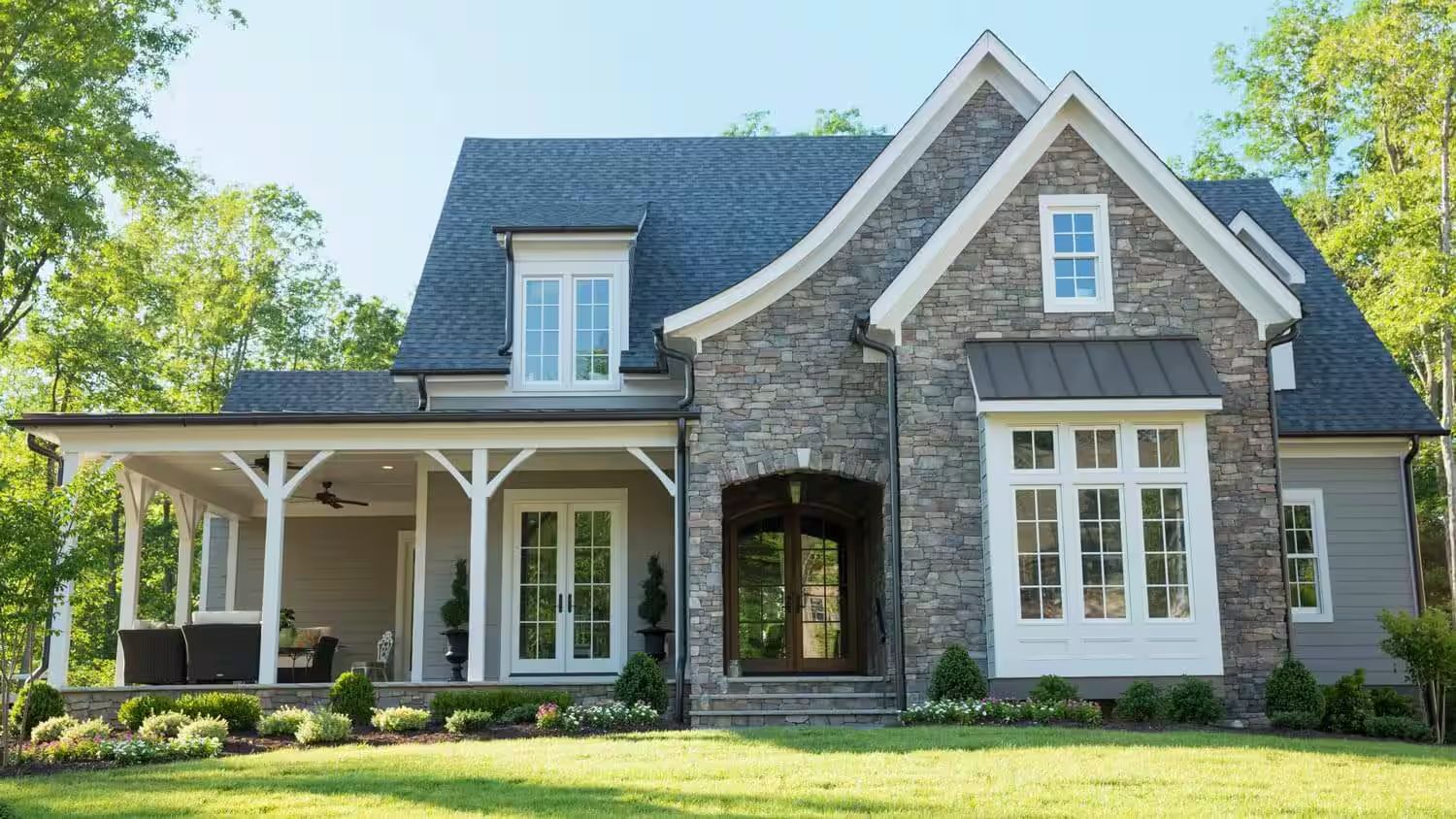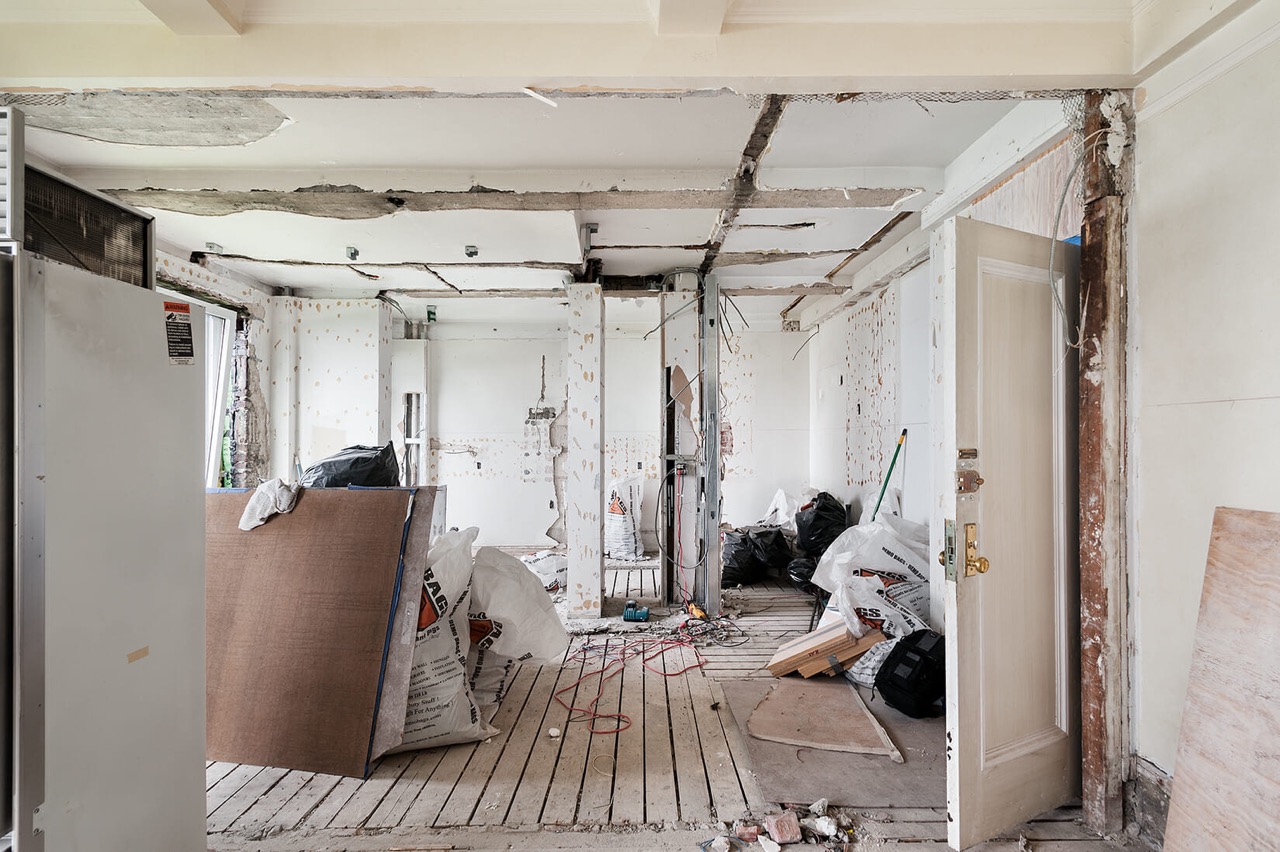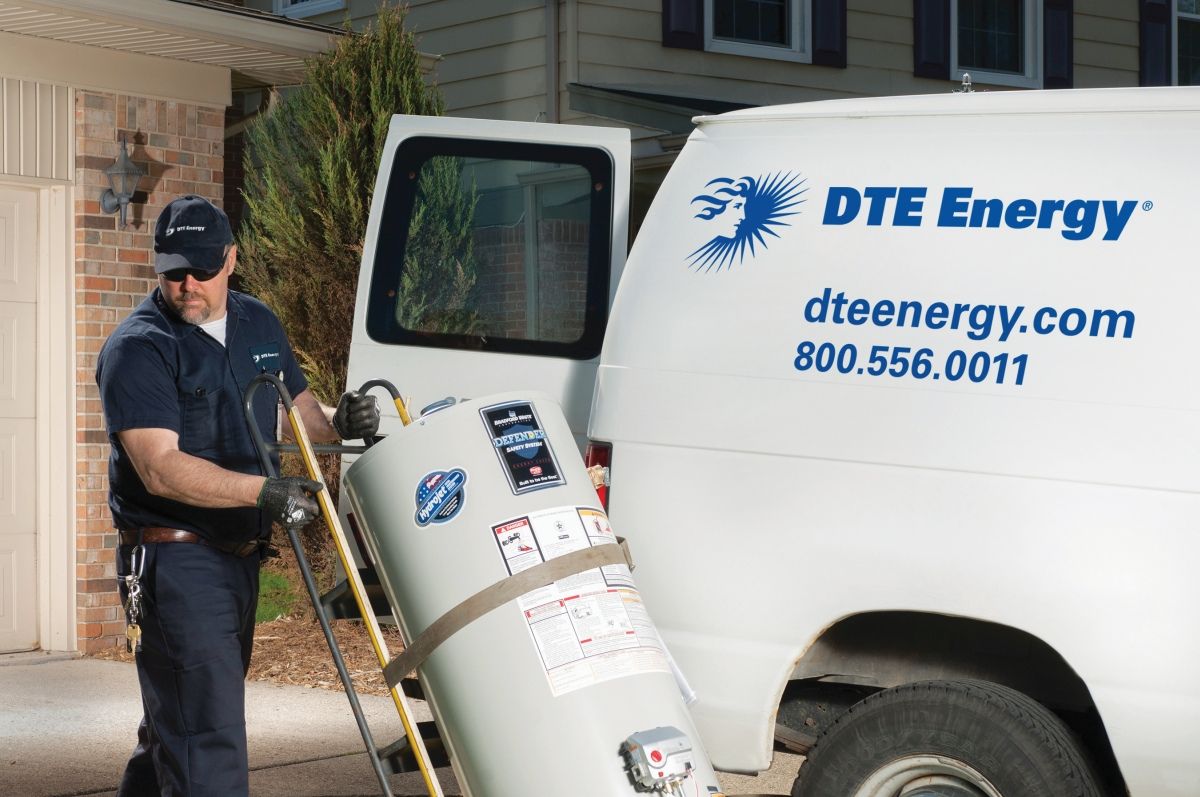Home>diy>Home Improvement>What Does Renovation Insurance Cover


Home Improvement
What Does Renovation Insurance Cover
Modified: October 20, 2024
Protect your home improvement project with renovation insurance. Find out what is covered and ensure peace of mind during your renovation process.
(Many of the links in this article redirect to a specific reviewed product. Your purchase of these products through affiliate links helps to generate commission for Storables.com, at no extra cost. Learn more)
Introduction
Welcome to the world of home improvement! Whether you are planning a small renovation project or a major overhaul, the process of transforming your living space can be exciting and rewarding. However, it is essential to consider the potential risks and challenges that may arise during the renovation process.
One aspect that often gets overlooked is renovation insurance. This type of insurance is specifically designed to protect homeowners and contractors from financial losses that can occur during the renovation process. In this article, we’ll explore the world of renovation insurance, including what it covers and why it is crucial for any home improvement project.
Renovation insurance, also known as builder’s risk insurance, is a specialized insurance policy that covers property owners, contractors, and subcontractors involved in construction or renovation projects. It provides coverage for damage to the property, liability claims, and stolen or damaged materials while the renovation is taking place.
During a renovation project, your property and belongings are vulnerable to various risks, such as fire, theft, vandalism, or accidental damage. Additionally, there is a risk of accidents occurring on the construction site, which can lead to injuries or property damage. Renovation insurance acts as a safety net, safeguarding you against these risks and offering financial protection in case of unexpected events.
There are different types of renovation insurance policies available to suit the specific needs of different projects. The coverage options can vary, but most policies offer protection for property damage, liability claims, and personal belongings. Let’s dive deeper into each of these coverage areas.
Key Takeaways:
- Renovation insurance provides crucial protection for homeowners and contractors, covering property damage, liability claims, and personal belongings during the renovation process. Understanding the coverage options and limitations is essential for a successful home improvement project.
- When choosing renovation insurance, consider the scope of your project, research different providers, and seek professional advice to ensure you have the most appropriate coverage. By making informed decisions, you can embark on your home improvement journey with confidence and peace of mind.
Understanding Renovation Insurance
Renovation insurance is a specialized type of insurance that provides coverage specifically tailored for construction and renovation projects. It is essential to understand the key elements of renovation insurance to ensure you have adequate protection during your home improvement journey.
One important aspect of renovation insurance is that it typically covers both property owners and contractors involved in the project. This means that whether you are a homeowner undertaking the renovation yourself or you have hired a contractor to handle the work, you can benefit from this type of insurance coverage.
The coverage provided by renovation insurance can vary depending on the specific policy and provider. However, there are some common coverage areas that you can expect to find in most renovation insurance policies.
First and foremost, renovation insurance provides coverage for property damage. This includes protection against risks such as fire, water damage, theft, and vandalism. Should any of these events occur during the renovation process and result in damage to your property, the insurance policy will help cover the costs of repairs or replacement.
Another crucial aspect of renovation insurance is liability coverage. Construction sites can be hazardous environments, and accidents can happen. If someone, such as a contractor or a visitor, suffers an injury or their property gets damaged while on your property during the renovation, the liability coverage in your renovation insurance policy can help protect you from potential legal claims and cover any necessary medical expenses or property damage costs.
Renovation insurance also typically includes coverage for personal belongings. This coverage extends to items that belong to the property owner or the contractor. If any personal belongings, tools, or equipment are stolen, damaged, or destroyed during the renovation, the insurance policy can provide financial compensation for these losses.
Additionally, some renovation insurance policies offer additional coverages and options to enhance your protection. These may include coverage for temporary structures, such as portable offices or storage units, or coverage for loss of income due to project delays or interruptions.
It is important to understand that renovation insurance has certain exclusions and limitations. Each policy will have specific conditions and requirements that need to be met in order for coverage to apply. It is crucial to carefully review the policy terms and conditions, including any limitations on coverage, deductible amounts, and any policy exclusions. Understanding the fine print will help you make informed decisions and ensure you have appropriate coverage for your renovation project.
In the next section, we will explore the different types of renovation insurance policies available to homeowners and contractors.
Types of Renovation Insurance
When it comes to renovation insurance, there are different types of policies available to suit the specific needs of homeowners and contractors. Understanding these types of coverage options will help you choose the right policy for your renovation project.
1. Builder’s Risk Insurance: Builder’s risk insurance is the most common type of renovation insurance. It provides coverage for property owners and contractors during the construction or renovation process. This type of policy typically covers property damage caused by events like fire, theft, vandalism, or natural disasters. It also offers liability coverage in case of accidents or injuries that occur on the construction site.
2. Homeowner’s Insurance Endorsement: Some homeowners’ insurance policies offer endorsements or add-ons specifically for renovations. This type of coverage extends the existing homeowner’s insurance to include the renovation project. It provides protection for property damage and liability risks during the renovation period. It is essential to check with your homeowner’s insurance provider to see if they offer this endorsement.
3. Contractor’s Insurance: Contractors also have specific insurance options to protect themselves and their business during renovation projects. Contractor’s insurance typically includes general liability coverage, which protects against property damage and bodily injury claims. It may also include coverage for tools and equipment used for the project.
4. Renovation-Specific Insurance: In some cases, there may be insurance policies designed specifically for certain types of renovations or projects. For example, if you are undertaking a historical restoration project, there may be specialized insurance options available to address the unique risks associated with such projects. These policies may cover preservation and restoration costs, as well as liability risks unique to historical properties.
When choosing the right type of renovation insurance, it is crucial to consider the specific needs of your project and the level of coverage required. Factors such as the size and scope of the renovation, as well as the budget allocated, will influence the type of policy that is most suitable for your needs.
It is also important to work closely with your insurance provider or a licensed insurance agent to understand the policy terms, coverage limits, and any exclusions or limitations that may apply. They can help guide you towards the appropriate type of renovation insurance and ensure that you have the necessary protection in place.
Now that we have explored the different types of renovation insurance, let’s delve deeper into the coverage provided by these policies.
Coverage for Property Damage
One of the primary purposes of renovation insurance is to provide coverage for property damage that may occur during the renovation process. Property damage can result from a wide range of risks, including fire, water damage, theft, vandalism, and natural disasters. Having adequate coverage for property damage is crucial to safeguard your investment and ensure that any necessary repairs or replacements are taken care of.
Renovation insurance policies typically include coverage for property damage caused by unexpected events. For example, if a fire breaks out on your property during the renovation and damages the structure, walls, or fixtures, the insurance policy will cover the cost of repairs or reconstruction.
Water damage is another common risk during renovation projects, especially if plumbing or roofing systems are being worked on. In the event of water damage from leaks or burst pipes, renovation insurance can help cover the costs of repairing the damage and any resulting mold remediation.
Theft and vandalism are unfortunate risks that can occur during a renovation project. Construction sites are often vulnerable to theft, and expensive tools or materials can be targeted. Renovation insurance provides coverage for stolen or damaged property, ensuring that you are not left with the financial burden.
Natural disasters, such as earthquakes or storms, can also pose significant risks to renovation projects. Depending on the policy, renovation insurance may cover damages caused by natural disasters, protecting you from significant financial losses.
It is important to note that most renovation insurance policies have certain exclusions and limitations when it comes to property damage coverage. These may include pre-existing issues, wear and tear, or intentional damage caused by the homeowner or contractor. It is crucial to review your policy carefully and understand the specific coverage provided and any limitations or exclusions that may apply.
When filing a property damage claim, it is essential to document the damage thoroughly. Take photos, keep receipts, and maintain a detailed record of the incident. Contact your insurance provider as soon as possible to initiate the claims process. An adjuster will assess the damage and work with you to determine the extent of the coverage and the necessary repairs or replacements.
Having comprehensive coverage for property damage through renovation insurance will provide you with peace of mind throughout the renovation process. It ensures that your investment is protected, and any unexpected damage can be addressed promptly without incurring significant out-of-pocket expenses.
Next, let’s explore the coverage provided by renovation insurance for liability claims.
Coverage for Liability
When undertaking a renovation project, there are inherent risks involved, including the potential for accidents or injuries on the construction site. Liability coverage is an essential component of renovation insurance, protecting homeowners and contractors from potential legal claims and financial responsibility in the event of accidents or injuries.
Liability coverage provided by renovation insurance helps protect you in case someone is accidentally injured or their property gets damaged during the renovation process. It covers legal fees, medical expenses, and any settlements or judgments that may arise from liability claims.
Accidents can happen on construction sites, such as slips, falls, or injuries caused by tools or equipment. If a visitor, contractor, or subcontractor gets injured on your property during the renovation, the liability coverage in your renovation insurance policy will help cover their medical expenses and any legal claims that may result.
Liability coverage also protects against property damage caused by the construction activities. For example, if a contractor accidentally damages a neighbor’s fence or their property while working on your renovation, the liability coverage of your policy will help cover the repair or replacement costs.
Renovation insurance not only provides coverage for accidents and injuries that occur on the construction site but also extends liability coverage for occurrences off-site related to the renovation project. For instance, if a contractor accidentally damages a neighbor’s property while transporting materials or equipment to your site, the liability coverage in your policy can help cover the resulting damage and any related legal claims.
It is important to note that renovation insurance liability coverage may have certain exclusions and limitations. Common exclusions may include intentional acts, criminal activities, or damage caused by the homeowner or contractor’s negligence. It is crucial to review your policy carefully and understand the specific coverage and any limitations or exclusions that apply.
In the event of a liability claim, it is important to promptly notify your insurance provider. They will guide you through the claims process and work with you to investigate the incident and handle any legal proceedings. Remember to document all relevant information, including witness statements and any evidence related to the incident.
Having adequate liability coverage through renovation insurance is essential for your peace of mind during the renovation process. It protects you from potential financial burdens and legal consequences that may arise from accidents or injuries on the construction site.
In the next section, we will discuss the coverage provided by renovation insurance for personal belongings.
When considering renovation insurance, make sure it covers property damage, theft of materials, and liability for injuries on the job site. Always review the policy details carefully.
Read more: What Insurance Covers Home Repairs
Coverage for Personal Belongings
During a renovation project, not only is your property at risk of damage, but your personal belongings and valuable possessions are also vulnerable. Renovation insurance provides coverage for personal belongings, ensuring that you are protected in the event of theft, damage, or loss of your valuable items.
Whether you are living in your home during the renovation or have temporarily moved out, renovation insurance can offer coverage for your personal belongings. This includes items such as furniture, appliances, electronics, clothing, and other personal possessions that may be affected by the renovation activities.
For example, if there is a break-in and your belongings are stolen or damaged during the renovation process, the renovation insurance policy can provide coverage for the stolen or damaged items. This coverage extends to both the property owner’s possessions and those of the contractor or subcontractors involved in the project.
Renovation insurance may also provide coverage for damage to your personal belongings caused by accidents or negligence during the construction process. For instance, if a contractor accidentally spills paint on your furniture or a tool causes damage to your artwork, the insurance policy can help cover the repair or replacement costs.
It is important to review the coverage limits and any exclusions related to personal belongings in your renovation insurance policy. Certain high-value items, such as jewelry or collectibles, may have specific limits or require additional coverage to be adequately protected. It is advisable to document and provide proof of ownership for these items to the insurance provider.
When filing a claim for personal belongings, you will need to document the items that were stolen, damaged, or lost. Providing photos, receipts, and any other supporting documentation will help strengthen your claim.
It is worth noting that if you have a separate homeowners or renters insurance policy, some of your personal belongings may already be covered. In this case, it is important to inform your insurance providers about the renovation project to ensure that you have adequate coverage and avoid any potential gaps.
By having coverage for your personal belongings through renovation insurance, you can have peace of mind knowing that your possessions are protected during the renovation project. This protection ensures that any unexpected losses or damages can be addressed without impacting your finances.
Next, let’s explore some additional coverages and options that renovation insurance may offer.
Additional Coverages and Options
Renovation insurance not only provides coverage for property damage, liability, and personal belongings, but it may also offer additional coverages and options to enhance your protection during the renovation process. These additional coverages can be crucial in addressing specific risks and ensuring comprehensive coverage for your project.
One common additional coverage offered by renovation insurance is coverage for temporary structures. During a renovation project, you may need to set up temporary structures on your property, such as portable offices or storage units. This coverage can protect these structures from damage or loss caused by events like fire, theft, or vandalism.
Loss of income coverage is another important option to consider. If your renovation project experiences unexpected delays or interruptions, it could result in a loss of income if you are unable to use or rent out the property during that time. Renovation insurance may provide coverage for this loss of income, helping to mitigate the financial impact of project delays.
Some renovation insurance policies also offer coverage for additional expenses incurred due to project delays. These expenses may include additional rental costs, relocation expenses, or extended storage fees. This coverage can help alleviate the financial burden of unexpected delays and keep your project on track.
Depending on the nature of your renovation project, you may also want to consider specific options such as coverage for green upgrades. This coverage can help offset the additional costs associated with incorporating energy-efficient or eco-friendly features into your renovation, such as solar panels or energy-efficient windows.
It is important to carefully review the terms and conditions of your renovation insurance policy to understand the full scope of additional coverages and options available. Discussing your specific needs with your insurance provider or a licensed insurance agent can help you determine which additional coverages are most relevant for your project.
By taking advantage of these additional coverages and options, you can ensure that your renovation insurance policy provides comprehensive protection tailored to the unique needs of your project. This will help you mitigate risks and handle any unexpected events that may arise during the renovation process.
Now that we have explored the additional coverages and options, let’s discuss the exclusions and limitations you need to be aware of in your renovation insurance policy.
Exclusions and Limitations
While renovation insurance provides valuable coverage for a wide range of risks during construction and renovation projects, it is important to understand that there are exclusions and limitations within these policies. These exclusions and limitations outline the circumstances or situations where the insurance coverage may not apply or may have reduced coverage.
One common exclusion in renovation insurance policies is pre-existing conditions. This means that any damage or issues that existed prior to the renovation project may not be covered. It is crucial to thoroughly inspect your property before starting the renovation and address any pre-existing issues separately.
Another common limitation is wear and tear. Renovation insurance policies generally do not cover damages that occur naturally over time due to regular use or aging. This includes damages that are a result of the normal wear and tear of your property or gradual deterioration.
Intentional damage or negligence is typically excluded from renovation insurance coverage. This means that any damages resulting from intentional acts or intentional destruction of property will not be covered by the policy. Similarly, damages caused by the homeowner or contractor’s negligence may not be covered either.
Some policies may have limitations on coverage for specific types of property or items. For example, high-value items such as jewelry, collectibles, or artwork may have coverage limits. It is important to review your policy and consider additional coverage for such valuable items if needed.
Additionally, each renovation insurance policy may have its own set of specific limitations and conditions, such as maximum coverage limits, deductibles, and coverage periods. It is crucial to carefully read and understand your policy to ensure that you are aware of these limitations and can make informed decisions.
It is also important to note that renovation insurance is not a substitute for proper safety practices or compliance with building codes and regulations. In the event of a claim, your insurance provider may investigate whether these practices were followed. Failing to adhere to safety guidelines or building codes may impact your coverage.
When reviewing your policy, take note of any exclusions and limitations and consider whether additional coverage or endorsements may be necessary to fill any gaps. Working closely with your insurance provider or a licensed insurance agent will help you understand these limitations and make informed decisions regarding your coverage.
Understanding the exclusions and limitations of your renovation insurance policy is crucial to ensure you have proper coverage and avoid any surprises in the event of a claim. By being aware of these factors, you can take steps to manage potential risks and make informed decisions throughout your renovation project.
Now, let’s explore how to choose the right renovation insurance for your project.
Choosing the Right Renovation Insurance
When it comes to choosing the right renovation insurance for your project, it is important to consider several factors to ensure you have adequate coverage that aligns with your specific needs. Here are some key points to keep in mind when selecting a renovation insurance policy:
1. Assess your project scope: Evaluate the size and complexity of your renovation project. Consider factors such as the type of renovation, the duration of the project, and the potential risks involved. This will help you determine the level of coverage you require.
2. Research insurance providers: Look for reputable insurance providers that specialize in renovation insurance. Take the time to compare different policies, coverage options, and customer reviews to find a provider with a strong track record in the industry.
3. Understand coverage details: Read the policy terms and conditions thoroughly. Pay attention to coverage limits, deductibles, and any exclusions or limitations that may apply. Ensure that the policy aligns with your specific project requirements and that you understand what is and isn’t covered.
4. Consider additional coverages: Assess whether you need any additional coverages or options based on the nature of your renovation project. This may include coverage for temporary structures, loss of income, or specific endorsements for high-value items.
5. Seek professional advice: Consult with an insurance agent or broker who specializes in renovation insurance. They can provide expert guidance and help you understand the intricacies of different policies and coverage options. They can also assist in securing the most appropriate coverage for your specific project needs.
6. Review your existing insurance: If you have an existing homeowners or renters insurance policy, review it to understand any coverage extensions or limitations during renovations. It is important to inform your insurance providers about the renovation project to ensure that you have the necessary coverage and avoid any overlaps or gaps in coverage.
7. Consider your budget: Evaluate the cost of the insurance policy and how it fits within your renovation budget. While it is important to have adequate coverage, it is also important to find a policy that is affordable and provides value for money.
8. Evaluate customer service: Consider the customer service reputation of the insurance provider. Look for a company that is responsive and helpful, especially when it comes to filing claims and handling potential issues that may arise during the renovation process.
Taking these factors into consideration will help you choose the right renovation insurance policy that meets your specific needs. Remember, it’s better to have comprehensive coverage and peace of mind throughout your renovation journey.
Let’s conclude our discussion on renovation insurance in the next section.
Conclusion
Renovation insurance is a crucial aspect of any home improvement project. It provides protection and peace of mind by covering property damage, liability claims, and losses to personal belongings during the renovation process. By understanding the different types of renovation insurance, coverage options, and exclusions, you can make informed decisions to ensure you have the right coverage for your specific project.
Whether you are a homeowner undertaking a renovation yourself or have hired a contractor, renovation insurance offers financial protection against unexpected events, such as fire, theft, vandalism, or accidents. It safeguards your investment and helps cover the costs of repairs, replacements, medical expenses, and liability claims that may arise during the construction phase.
When selecting a renovation insurance policy, assess the scope of your project, research different providers, and understand the specific coverage details. Consider additional coverages and options that may enhance your protection, and seek professional advice to ensure you have the most appropriate coverage for your project’s needs.
Remember to review any existing homeowners or renters insurance policies to understand the extent of coverage during renovations. It is important to be aware of any overlaps or gaps in coverage to avoid unnecessary financial risks.
Renovation insurance not only protects your property, but it also provides peace of mind throughout the renovation process. It allows you to focus on your project, knowing that you are financially protected against risks and unforeseen circumstances that may arise.
Take the time to assess your needs, compare different policies, and make an informed decision when selecting renovation insurance. By doing so, you can embark on your home improvement journey with confidence, knowing that you have the right coverage in place.
As with any insurance policy, it is important to review and understand the terms and conditions of your specific renovation insurance policy. Each policy may have unique features, limitations, exclusions, and claims processes, so be sure to thoroughly read and clarify any concerns with your insurance provider.
Now that you are equipped with a comprehensive understanding of renovation insurance, you can confidently protect your property, belongings, and financial interests as you embark on your home renovation project.
Frequently Asked Questions about What Does Renovation Insurance Cover
Was this page helpful?
At Storables.com, we guarantee accurate and reliable information. Our content, validated by Expert Board Contributors, is crafted following stringent Editorial Policies. We're committed to providing you with well-researched, expert-backed insights for all your informational needs.














0 thoughts on “What Does Renovation Insurance Cover”